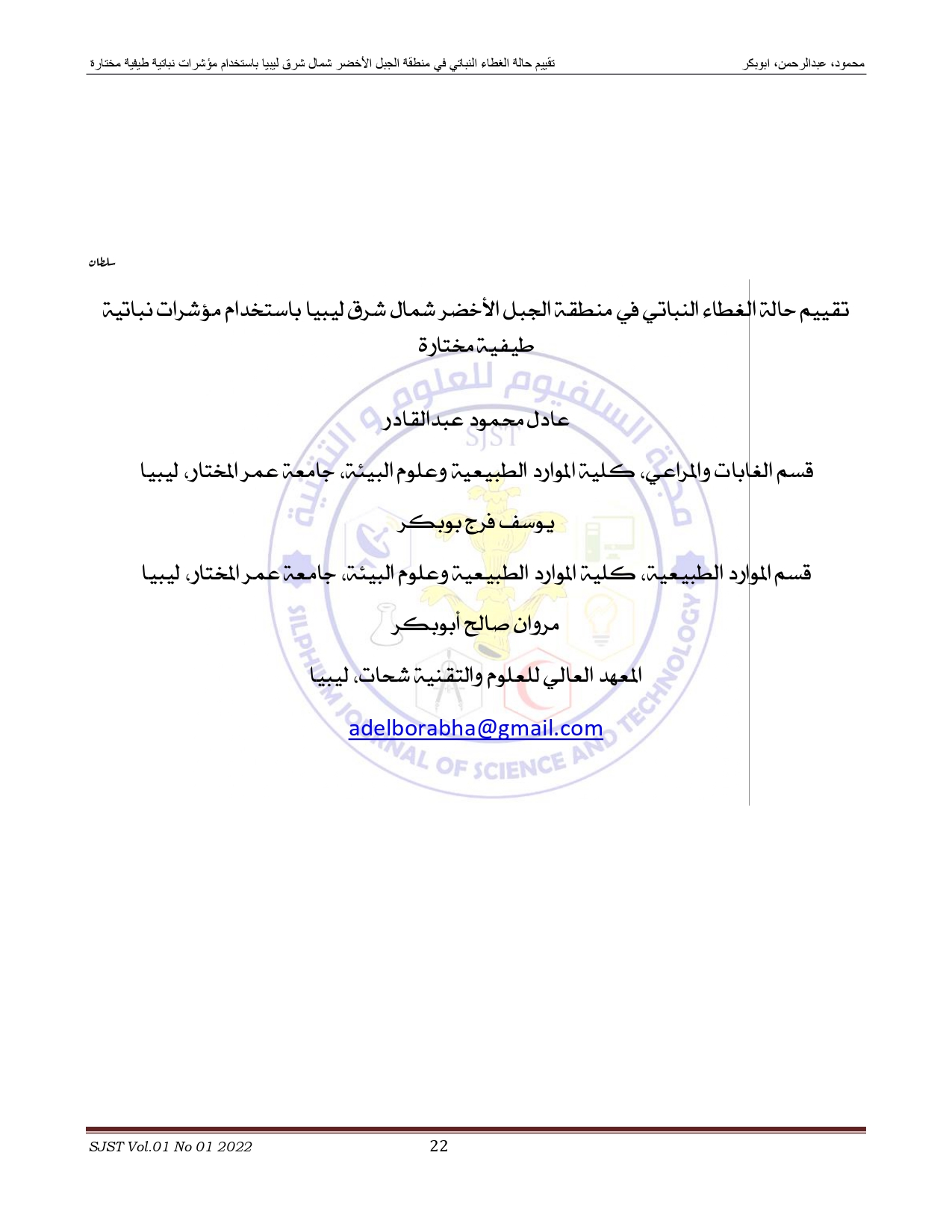Vegetation cover Assessment in Al-Jabal Al-Akhdar Region, Libya Using Selected Spectral Vegetation Indices
Keywords:
Maquis, MSAVI, Normalized Difference Vegetation Index, Al-Jabal Al-Akhdar RegionAbstract
(The region of Al-Jabal Al-Akhdar is considered one of the most important Libyan regions in terms of environment, despite its small area (1% of the country area) due to its great plant diversity, as the region contains half of the plant species recorded in Libya. Most of the previous studies indicated that the vegetation cover in the region is being severely degraded by rational human activities and climate changes. This study was conducted to assess and map the change in Al-Jabal Al-Akhdar region between 2002 and 2016 using remote sensing technology. Two Landsat satellite images (ETM+ and TIRS) were used. The Normalized Difference Vegetation Index (NDVI) was employed to achieve the objective of the study, and the Modified Soil Adjusted Vegetation Index (MSAVI) was also tested for local conditions. The study area was classified into four levels of vegetation degradation (slight - medium - severe - very severe). The results showed a clear change in the size, density, spread and distribution of vegetation cover in the period between 2002 and 2016 despite the convergence of the range of NDVI values, which ranged between -0.250 - 0.571 in 2002 and -0.251 - 0.495 in 2016. The negative change rate in the vegetation cover between 2002 and 2016 was 29.13% (about 2000 km2), while the percentage of positive changes was 01.33% (about 100 km2) and about 70% of the total area remains unchanged. The results showed a clear effect of increasing the level of vegetation degradation on the values of NDVI, where the bare areas that cause brightness. This did not affect the MSAVI index, which may be the best choice in the case of sporadic vegetation as is the case in the study area. The NDVI and MSAVI indicators can be used to study future trends of land cover changes and to identify effective factors on vegetation cover in order to get better understanding planners and decision-makers on this issue at the local level.


